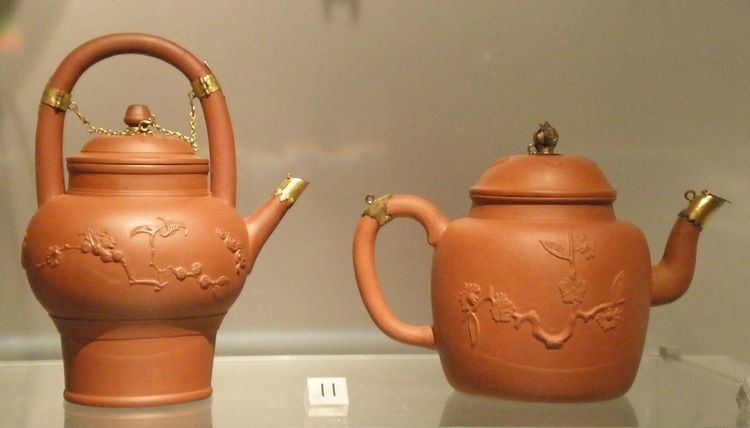 | ||
Sprigging or sprigged decoration is a technique for decorating pottery with low relief shapes made separately from the main body and applied to it before firing. Usually thin press moulded shapes are applied to greenware or bisque. The resulting pottery is termed sprigged ware, and the added piece is a "sprig". The technique may also be described by terms such as "applied relief decoration", especially in non-European pottery.
Contents
The alternative way to achieve similar effects without sprigging is to mould the whole body, which is also common.
Technique
The clay body for the sprig is pushed into the mould, the back scraped flat, then released on a damp cloth pad. The greenware is wetted lightly with a brush, and the sprig is pressed lightly with another cloth pad to push out water and air. Slip may be used as an adhesive.
History
Sprigging is used in Ancient Roman pottery, and in China at least as early as the 6th century AD, continuing thereafter. It was not one of the main decorative techniques of Chinese ceramics, but for example was and is common on Yixing teapots. It is sometimes used on large celadon vases from the late Yuan dynasty or early Ming dynasty (14th century). By at least the 9th century it was used in Islamic pottery.
In Europe, after the basic wares of the Middle Ages, use revived in fifteenth-century German salt-glazed stoneware, which was widely exported around Europe. In Britain the first successful attempts to imitate both German wares and the Yixing teapots which were now being imported, mostly via the Netherlands, came around 1690. Whether John Dwight of the Fulham Pottery or the German-born Elers brothers were first is uncertain. They used metal moulds, which tend to leave a thin line impressed into the body around the outline of the sprig. Sprigging was used extensively in the Staffordshire potteries on a variety of wares and reached a height with Josiah Wedgwood's replica of the Portland Vase in 1790.
